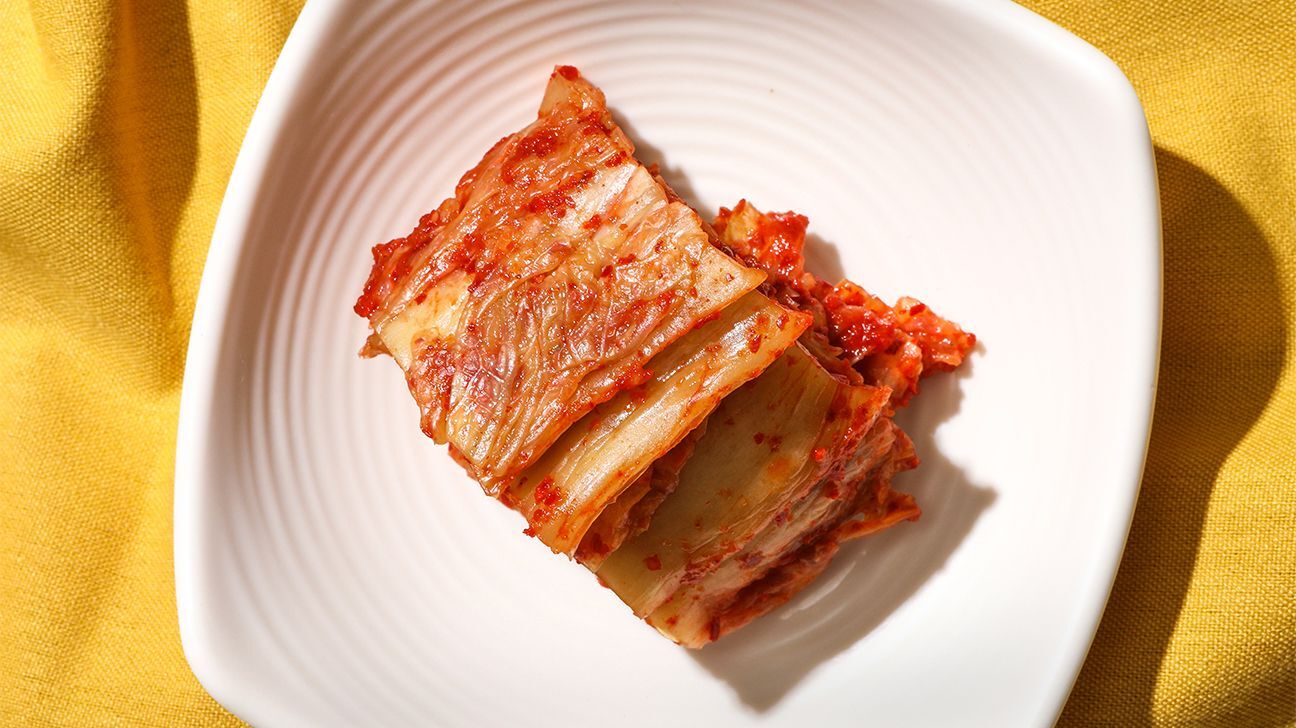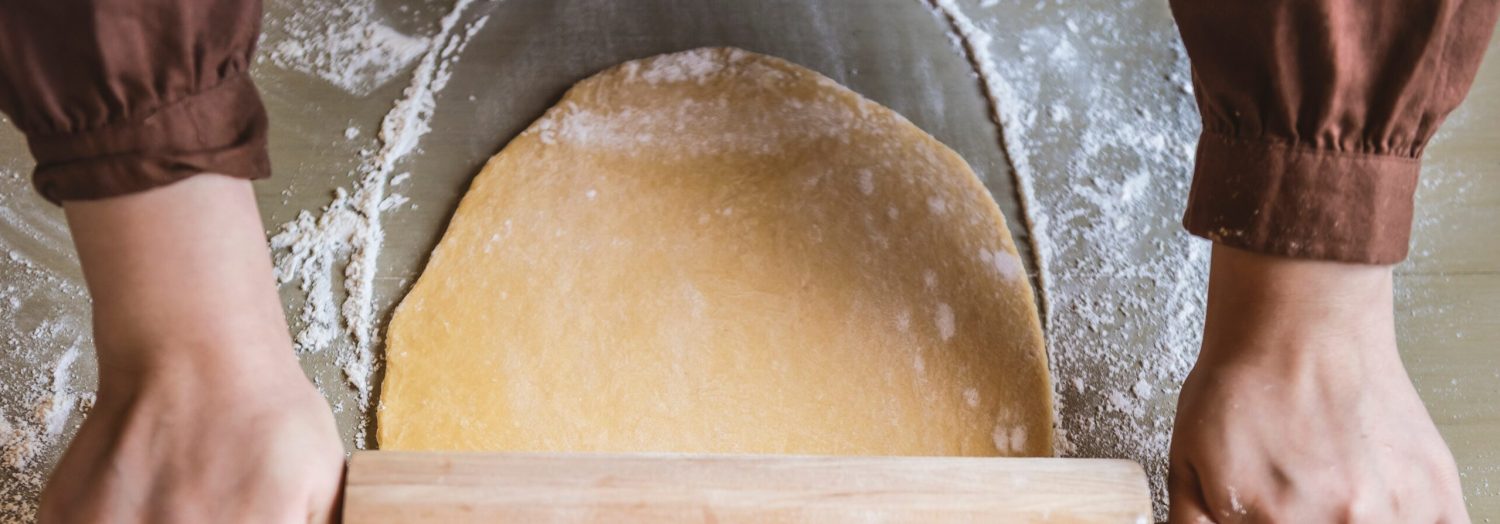This Japanese kimchi recipe brings a unique twist to the traditional Korean dish, combining the flavors of napa cabbage, daikon radish, and carrot with a spicy kick from gochugaru. It's a delightful blend of textures and tastes that will elevate your meals with its tangy, umami-rich profile.
Some ingredients in this recipe might not be staples in your pantry. Gochugaru, or Korean red pepper flakes, can be found in the international aisle or at an Asian grocery store. Fish sauce is another essential component, lending a deep umami flavor. If you're unfamiliar with daikon radish, it's a large, white radish that adds a crisp texture and mild flavor.

Ingredients For Japanese Kimchi Recipe
Napa cabbage: A type of Chinese cabbage with a mild flavor and crisp texture.
Salt: Used to wilt the cabbage and draw out moisture.
Daikon radish: A large, white radish that adds crunch and a mild flavor.
Carrot: Adds sweetness and color to the kimchi.
Garlic: Provides a pungent and aromatic flavor.
Ginger: Adds a warm, spicy note to the kimchi.
Gochugaru: Korean red pepper flakes that give the kimchi its signature heat.
Fish sauce: Adds a deep umami flavor.
Green onions: Adds a fresh, mild onion flavor.
Technique Tip for This Recipe
When massaging the napa cabbage with salt, make sure to use a firm but gentle pressure. This helps to break down the cell walls of the cabbage, allowing it to release water and become more pliable. This step is crucial for achieving the right texture in your kimchi. Additionally, when packing the mixture into the fermentation jar, ensure there are no air pockets by pressing down firmly. This creates an anaerobic environment that is essential for proper fermentation.
Suggested Side Dishes
Alternative Ingredients
napa cabbage - Substitute with savoy cabbage: Savoy cabbage has a similar texture and can absorb flavors well, making it a good alternative.
salt - Substitute with sea salt: Sea salt can provide a similar level of salinity and enhance the overall flavor.
daikon radish - Substitute with regular radish: Regular radishes can offer a similar crunch and slight peppery flavor.
carrot - Substitute with jicama: Jicama has a similar crunch and mild sweetness, making it a good alternative.
garlic - Substitute with shallots: Shallots can provide a similar aromatic quality and depth of flavor.
ginger - Substitute with galangal: Galangal has a similar spicy and aromatic profile, though slightly more citrusy.
gochugaru - Substitute with red chili flakes: Red chili flakes can provide a similar heat level, though the flavor profile will be slightly different.
fish sauce - Substitute with soy sauce: Soy sauce can provide a similar umami flavor, though it is less pungent.
green onions - Substitute with chives: Chives can offer a similar mild onion flavor and can be used in the same way.
Other Alternative Recipes Similar to This
How to Store / Freeze This Recipe
Once your kimchi has reached the desired level of fermentation, transfer it to airtight containers. Glass jars with tight-fitting lids are ideal for preserving the flavors and preventing any unwanted odors from escaping.
Store the kimchi in the refrigerator. The cool temperature will slow down the fermentation process, allowing the flavors to develop more gradually. Properly stored, kimchi can last for several months, becoming more tangy and complex over time.
For longer storage, consider freezing your kimchi. Portion it into smaller, freezer-safe containers or heavy-duty freezer bags. This will make it easier to thaw only what you need without compromising the rest of the batch.
When freezing, ensure that there is some headspace in the container or bag to allow for expansion. This prevents the container from cracking or the bag from bursting as the kimchi freezes.
Label each container with the date of preparation. This helps you keep track of how long the kimchi has been stored and ensures you use the oldest batches first.
To thaw frozen kimchi, transfer it to the refrigerator and allow it to defrost slowly. This helps maintain its texture and flavor. Avoid using a microwave or hot water to speed up the process, as this can negatively affect the kimchi's quality.
Once thawed, consume the kimchi within a week for the best taste and texture. Keep it refrigerated and always use clean utensils to avoid introducing contaminants that could spoil the batch.
If you notice any off smells, unusual colors, or mold growth, discard the kimchi immediately. Properly stored kimchi should have a pleasant, tangy aroma and vibrant appearance.
How to Reheat Leftovers
Stovetop Method:
- Heat a skillet over medium heat.
- Add a small amount of olive oil or sesame oil to the pan.
- Add the kimchi and stir-fry for 3-5 minutes until heated through.
- Optionally, add a splash of soy sauce or rice vinegar for extra flavor.
Microwave Method:
- Place the kimchi in a microwave-safe dish.
- Cover the dish with a microwave-safe lid or plastic wrap, leaving a small vent.
- Microwave on high for 1-2 minutes, stirring halfway through.
- Let it sit for a minute before serving to allow the heat to distribute evenly.
Oven Method:
- Preheat your oven to 350°F (175°C).
- Spread the kimchi evenly in an oven-safe dish.
- Cover the dish with aluminum foil.
- Bake for 10-15 minutes until heated through.
- Optionally, sprinkle with sesame seeds or chopped green onions before serving.
Steaming Method:
- Set up a steamer basket over a pot of boiling water.
- Place the kimchi in the steamer basket.
- Cover and steam for 5-7 minutes until heated through.
- Serve immediately, optionally garnished with toasted sesame seeds.
Sous Vide Method:
- Preheat your sous vide machine to 140°F (60°C).
- Place the kimchi in a vacuum-sealed bag.
- Submerge the bag in the water bath for 30-45 minutes.
- Remove from the bag and serve immediately.
Air Fryer Method:
- Preheat your air fryer to 350°F (175°C).
- Place the kimchi in an air fryer-safe dish.
- Air fry for 5-7 minutes, shaking the basket halfway through.
- Serve hot, optionally drizzled with a bit of sesame oil.
Best Tools for This Recipe
Knife: For chopping the napa cabbage into bite-sized pieces and julienning the daikon radish and carrot.
Cutting board: Provides a stable surface for chopping and julienning vegetables.
Mixing bowl: Used to hold the chopped napa cabbage while salting and massaging it.
Colander: For rinsing the cabbage under cold water to remove excess salt.
Large bowl: To combine the daikon radish, carrot, garlic, ginger, gochugaru, fish sauce, and green onions.
Spoon: For mixing the ingredients together evenly.
Fermentation jar: To pack the kimchi mixture tightly for fermentation.
Gloves: Optional, but useful for massaging the cabbage with salt and mixing the spicy ingredients to protect your hands.
Grater: For grating the ginger.
Measuring spoons: To measure out the salt, gochugaru, and fish sauce accurately.
How to Save Time on Making This Recipe
Pre-chop vegetables: Prepare the napa cabbage, daikon radish, and carrot in advance and store them in the refrigerator.
Use a food processor: Mince garlic and grate ginger quickly using a food processor.
Batch preparation: Make a larger batch of kimchi and store it in smaller jars for convenience.
Ready-made gochugaru: Purchase pre-ground gochugaru to save time on grinding.
Fermentation jars: Use wide-mouth jars for easier packing and pressing down the mixture.
Quick rinse: Rinse the salted cabbage in a colander to speed up the process.

Japanese Kimchi
Ingredients
Main Ingredients
- 1 head Napa Cabbage chopped
- 2 tablespoon Salt
- 1 cup Daikon Radish julienned
- 1 cup Carrot julienned
- 4 cloves Garlic minced
- 1 tablespoon Ginger grated
- 3 tablespoon Gochugaru (Korean Red Pepper Flakes)
- 2 tablespoon Fish Sauce
- 1 bunch Green Onions chopped
Instructions
- 1. Chop the Napa cabbage into bite-sized pieces and place in a large mixing bowl.
- 2. Sprinkle the salt over the cabbage and massage it in. Let it sit for 1-2 hours until it wilts.
- 3. Rinse the cabbage under cold water to remove excess salt and drain well.
- 4. In a separate bowl, combine the daikon radish, carrot, garlic, ginger, gochugaru, fish sauce, and green onions.
- 5. Add the cabbage to the mixture and toss to coat evenly.
- 6. Pack the mixture tightly into a fermentation jar, pressing down to remove air bubbles.
- 7. Seal the jar and let it ferment at room temperature for 1-5 days, checking daily and pressing down if needed.
- 8. Once fermented to your liking, store the kimchi in the refrigerator.
Nutritional Value
Keywords
More Amazing Recipes to Try 🙂
- Japanese Gratin Recipe50 Minutes
- Nikujaga Recipe45 Minutes
- Japanese Salmon Flake Recipe25 Minutes
- Japanese Spicy Chicken Recipe50 Minutes
- Japanese Eel Rice (Unadon) Recipe35 Minutes
- Japanese Perilla (Shiso) Recipe15 Minutes
- Japanese Hand Roll Recipe30 Minutes
- Japanese Hanami Dango Recipe30 Minutes

Leave a Reply